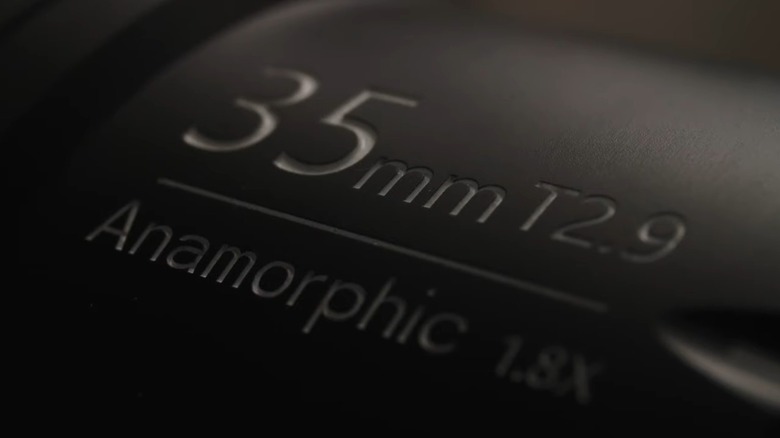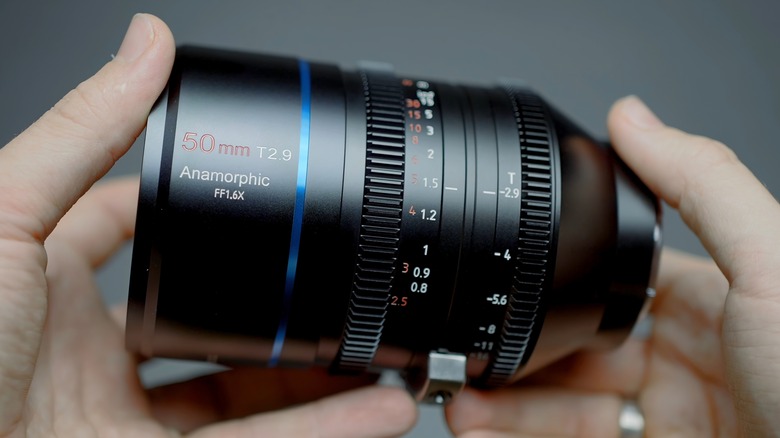What Is An Anamorphic Lens And Why Would You Use One?
The world of cameras is vast, and for beginners, a cursory glance alone can present tons of questions. Which of the major camera brands are the worst and best? What kind of photography or videography are you most interested in? How can you fit this interest into your budget? These and other questions will likely find their final answer in time if you stick with the hobby, while others will recur throughout your work. One example is the question of which lens is right for a given task? There are common lenses like wide-angle, macro, and zoom, as well as lesser-known specialty ones like the anamorphic lens.
Anamorphic camera lenses, like those found in the Viltrox EPIC anamorphic 25mm/100Mmm T2.0 1.33X Cine lens kit, have been a staple of entertainment for ages. Initial widescreen technology didn't make full use of a 35mm frame, cropping part of it and leaving it empty. Thus, anamorphic lenses were designed to help wider, more rectangular images fit more snugly within 35mm frames without masking.
This is accomplished with cylindrical lens elements at the front, as opposed to a more traditional spherical shape. In both film and digital formats, this then requires a process in post-production known as "de-squeezing" so that the captured media doesn't appear squished or distorted when played back. The end result is crisp, detail-packed imagery in the aspect ratio of 2:39:1. So, if you're looking to expand your lens collection and capture images moving and static in new ways, why would you opt for an anamorphic lens?
Anamorphic lenses pack a cinematic punch
For a more casual photographer or videographer, an anamorphic lens might be easy to pass on. Not only are they pretty bulky and might not suit your image-capturing goals, but they can lean toward the expensive side of the price scale. If they have piqued your interest and you have the funds to get ahold of one, though, an anamorphic lens can present some unique artistic opportunities. After all, they're perfect for a wide range of image-capturing contexts, from portraits, to close-ups, to candids.
As mentioned previously, anamorphic lenses are meant to produce high-quality, wide field-of-view images in the 2:39:1 aspect ratio. Pictures and videos you get with an anamorphic lens will stand out from the rest with a more professional, cinematic, and overall grand presentation. With a shallower depth of field, an anamorphic lens can replicate the tightness and crispness of a portrait simultaneously. Also, if you're looking to experiment with long, movie-like lens flares and a unique oval bokeh — the areas of an image out of focus — then anamorphic is the way to go.
There are a lot of things to look for when buying a camera lens of any kind, arguably most important being what you actually need. Anamorphic lenses aren't for everyone, nor are they perfect for every situation, but if you want film-quality images of portraits, landscapes, and more, you'll likely find them to be more than worth the investment.

